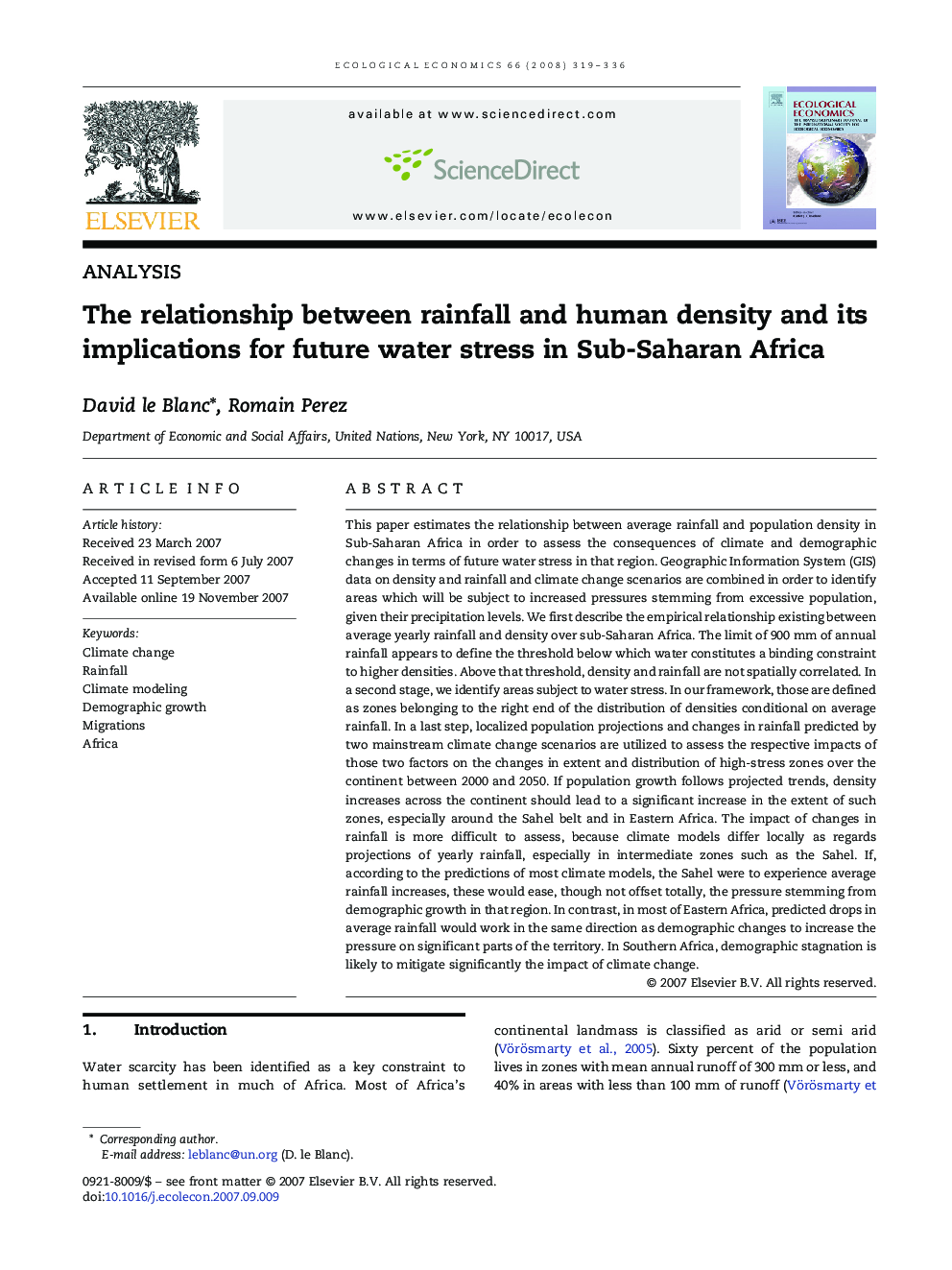| کد مقاله | کد نشریه | سال انتشار | مقاله انگلیسی | نسخه تمام متن |
|---|---|---|---|---|
| 5051573 | 1476412 | 2008 | 18 صفحه PDF | دانلود رایگان |
عنوان انگلیسی مقاله ISI
The relationship between rainfall and human density and its implications for future water stress in Sub-Saharan Africa
دانلود مقاله + سفارش ترجمه
دانلود مقاله ISI انگلیسی
رایگان برای ایرانیان
کلمات کلیدی
موضوعات مرتبط
علوم زیستی و بیوفناوری
علوم کشاورزی و بیولوژیک
بوم شناسی، تکامل، رفتار و سامانه شناسی
پیش نمایش صفحه اول مقاله

چکیده انگلیسی
This paper estimates the relationship between average rainfall and population density in Sub-Saharan Africa in order to assess the consequences of climate and demographic changes in terms of future water stress in that region. Geographic Information System (GIS) data on density and rainfall and climate change scenarios are combined in order to identify areas which will be subject to increased pressures stemming from excessive population, given their precipitation levels. We first describe the empirical relationship existing between average yearly rainfall and density over sub-Saharan Africa. The limit of 900Â mm of annual rainfall appears to define the threshold below which water constitutes a binding constraint to higher densities. Above that threshold, density and rainfall are not spatially correlated. In a second stage, we identify areas subject to water stress. In our framework, those are defined as zones belonging to the right end of the distribution of densities conditional on average rainfall. In a last step, localized population projections and changes in rainfall predicted by two mainstream climate change scenarios are utilized to assess the respective impacts of those two factors on the changes in extent and distribution of high-stress zones over the continent between 2000 and 2050. If population growth follows projected trends, density increases across the continent should lead to a significant increase in the extent of such zones, especially around the Sahel belt and in Eastern Africa. The impact of changes in rainfall is more difficult to assess, because climate models differ locally as regards projections of yearly rainfall, especially in intermediate zones such as the Sahel. If, according to the predictions of most climate models, the Sahel were to experience average rainfall increases, these would ease, though not offset totally, the pressure stemming from demographic growth in that region. In contrast, in most of Eastern Africa, predicted drops in average rainfall would work in the same direction as demographic changes to increase the pressure on significant parts of the territory. In Southern Africa, demographic stagnation is likely to mitigate significantly the impact of climate change.
ناشر
Database: Elsevier - ScienceDirect (ساینس دایرکت)
Journal: Ecological Economics - Volume 66, Issues 2â3, 15 June 2008, Pages 319-336
Journal: Ecological Economics - Volume 66, Issues 2â3, 15 June 2008, Pages 319-336
نویسندگان
David le Blanc, Romain Perez,